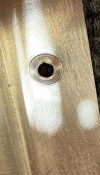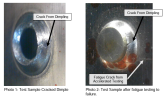That was part of their initial announcement back in October. They committed to kit contract pricing when you made your deposit, then assembled the kit, and then sent it to you when you made the final payment. That worked fine when they could assemble your kit for the aluminum and labor prices in effect on your order date. Over the past few years, aluminum and labor both got slower and pricier and kit orders went up, causing longer lead times. Just for comparison, I received my RV-14 empennage kit 10 calendar days after I ordered it in January 2018, and the fuselage kit arrived within 2 months of the order that spring. The last time I checked, empennage kits were 8+ months out and fuselage and wing kits could be 18+ months.
The other main factor was using kit deposits to finance anything other than filling the crate with an airplane kit, although that is not really bad on its own. Cash flow is how you keep the lights on and the timeclock punched in. I think it just turned into too much of a buffer against the cost and delay pains that, had they been felt earlier, might have led to things getting fixed before they spiraled so far out of control. Kind of like downing a bottle of ibuprofen before playing a game of football and wondering how you got so banged up.
The main thing to consider here is how much of Van's debt is in the form of unfulfilled kit deposits and how much is in the form of more traditional debts such as operating loans and inventory financing. They checked the boxes for having 25,001-50,000 creditors, $10,000,001 - $50,000,000 in assets, and $10,000,001 - $50,000,000 in liabilities. But their top unsecured creditors only add up to $1.75M. Depending on how far into each of those checkbox regions they are, it could be that they are perfectly healthy other than being upside-down on kits. That is, maybe they owe $2M cash plus a bunch of kit deposits. (Or maybe it's something different altogether, but the publicly available information suggests that their main liability is unfulfilled kit contracts.)
A big part of their reorganization plan is to give customers with pending kit orders the option of revising their contracts to the new pricing or of canceling the order and becoming unsecured creditors. I think the number they've tossed around is a 32% increase in kit pricing, quite a bit less than double. They also have some founder financing to help bridge the laser and corrosion do-overs. Given the demand for their product and the price-elasticity of their customer base, I think they have the right resources to solve the Chapter 11 puzzle and emerge in mostly the same form as we know them.




